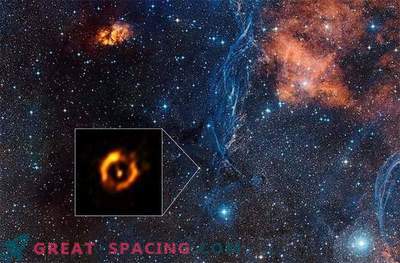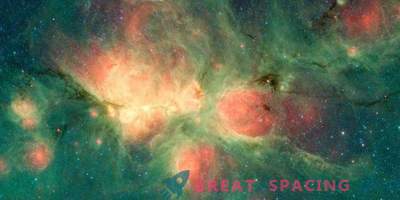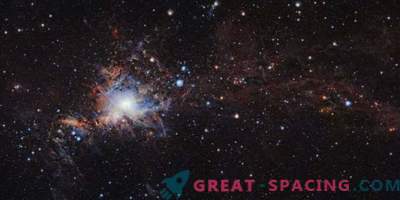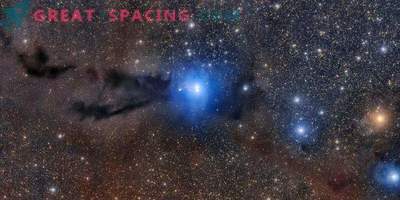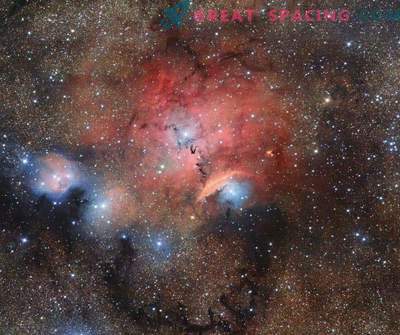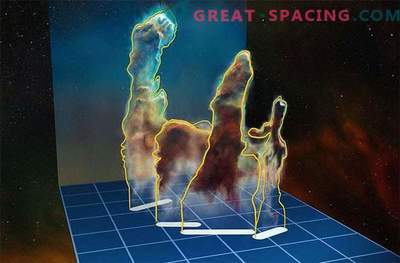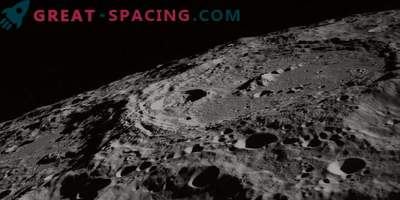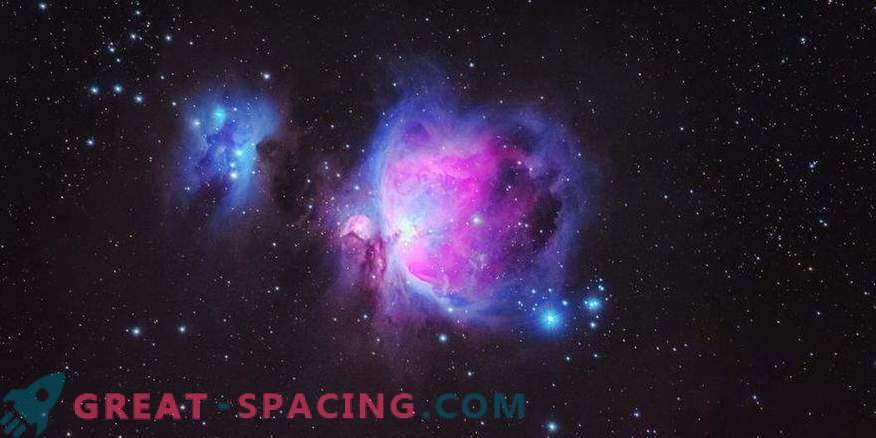
If you are in the northern hemisphere, then you have a great opportunity to watch an evening show in the constellation Orion. True, it hides a killer of planets or even several.
The life and death cycle of the stars are closely intertwined, especially in massive star-forming regions, such as the Orion Nebula. So it is not surprising that the birth and life of one object can lead to the end of another. Astronomers used the Atacama Large Millimeter / Submillimeter Array telescope in Chile to observe these interactions.
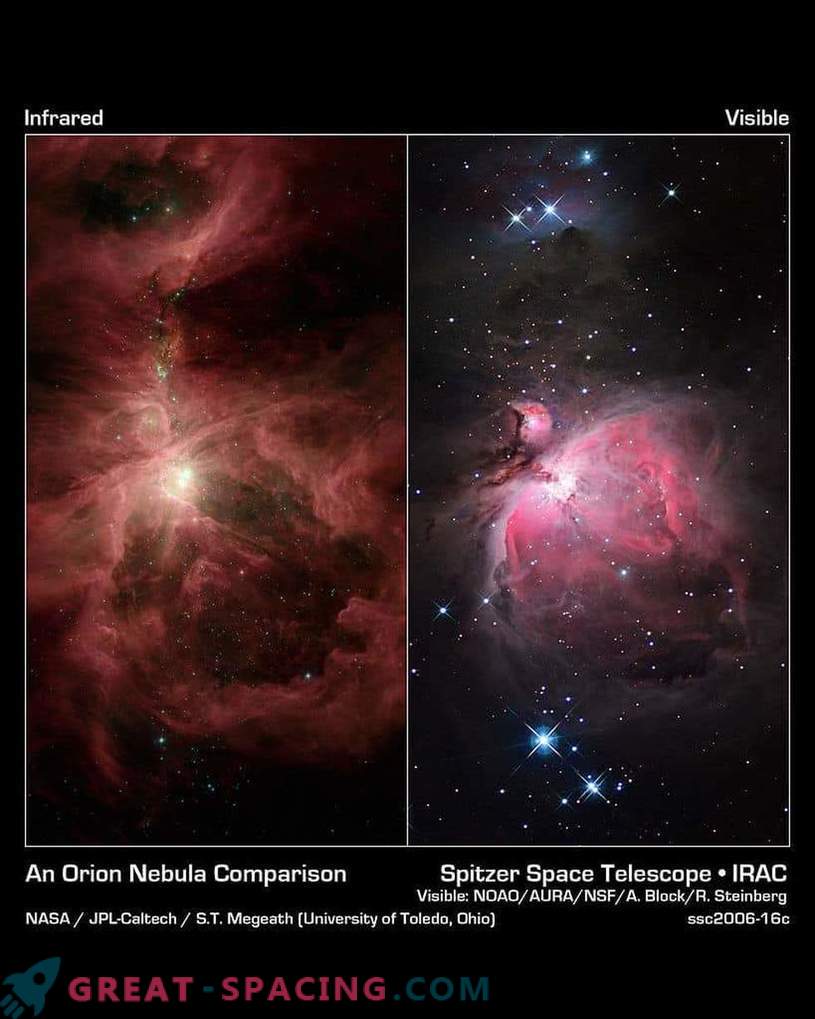
The composite image of infrared and visible observation of the M42, as well as the surrounding cloud, is a star-shaped region near the Sword. The infrared image was taken with the Spitzer telescope, and the visible - by the National Observatory of Optical Astronomy (Arizona). M42 occupies the lower half of the frame. In the upper left corner is the M43 nebula, and the middle one is NGC 1977. Each of them is marked by a dust ring that stands out in the IR spectrum. They are created by stellar winds. Visible observation displays a gas heated by ultraviolet rays. Above the nebula, the field appears dark because massive stars still do not emit dust. Infrared light allows you to notice swirling clouds, developing stars, emitting gas jets (green). The Hubble Space Telescope clearly shows us the protoplanetary disks of the Orion Nebula or protostars in the form of tears with a disk of dust and gas that still surround them. They glow and can be thrown back by the stellar winds of the larger and older stars of the nebula.
The Atacama Large Millimeter / Submillimeter Array telescope, with its increased sensitivity to detecting warm objects in dusty areas displayed in the protoplanetary disks found by Hubble, found much more than the optical telescope could find. Astronomers have been able to measure the mass of many protoplanetary systems. It turned out that many of them are doomed.

This is a large-scale look at the Orion Nebula, located 1350 light years away. Captured with an infrared telescope VISTA (Chile). Wide coverage allows you to display the M42 in full size, and infrared surveillance bypasses the dust barrier and shows hidden areas where young stars are hiding. For the picture used filters Z, J and Ks. The exposure time is 10 minutes for each filter. The displayed area covers 1 x 1.5 degrees
The Orion Nebula is illuminated by truly stellar monsters: O-type stars, which are tens of times more massive than our Sun with a surface temperature of up to 50,000 K. These massive stars dominate the nebula and when they explode as supernovae, they block star formation or move it away. In this case, O-type stars destroy the protoplanetary disks that are formed too closely, depriving them of the gas and dust from which the planets could form.
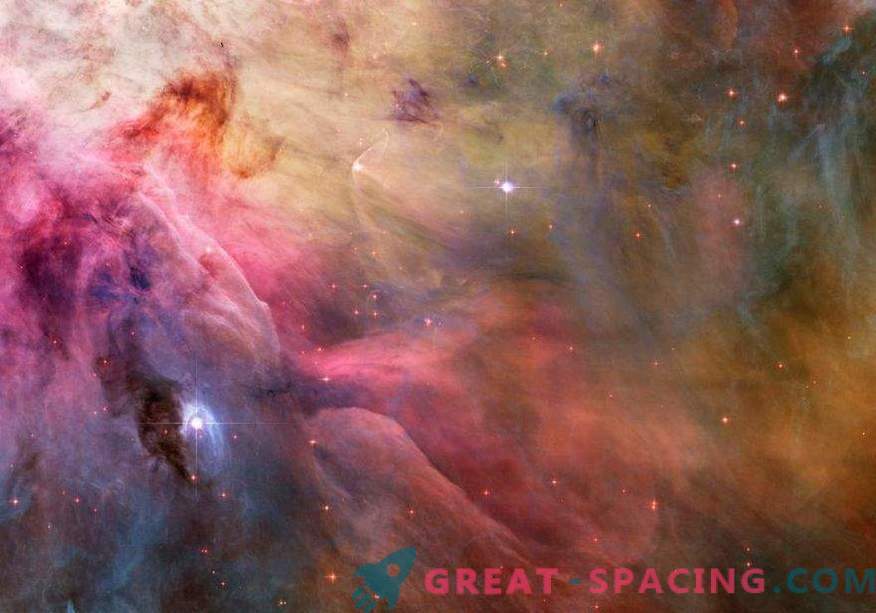
Panoramic view of the Orion Nebula (M42)
This is crucial for a number of planets that may exist in our galaxy. Many stars, including our Sun, probably formed in a massive region of star formation, such as the Orion Nebula. How many potential solar systems were destroyed before, did any of them have a chance? Of course, some of them were far enough away from any O-star, as evidenced by the thousands of exoplanets that we have already found, not to mention our own existence.
